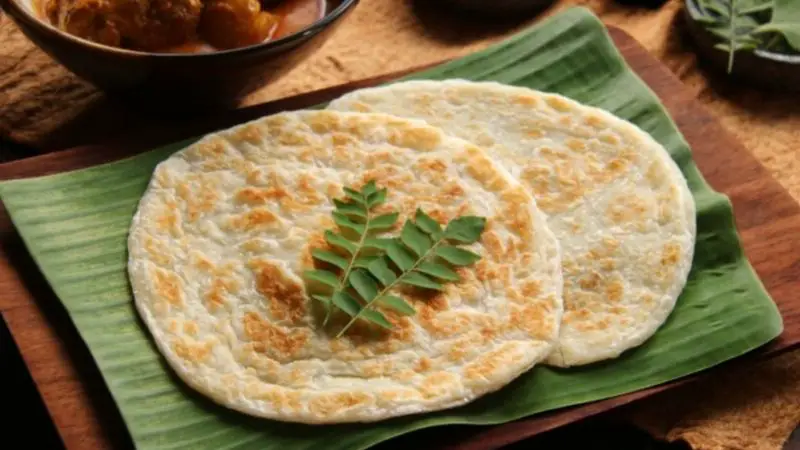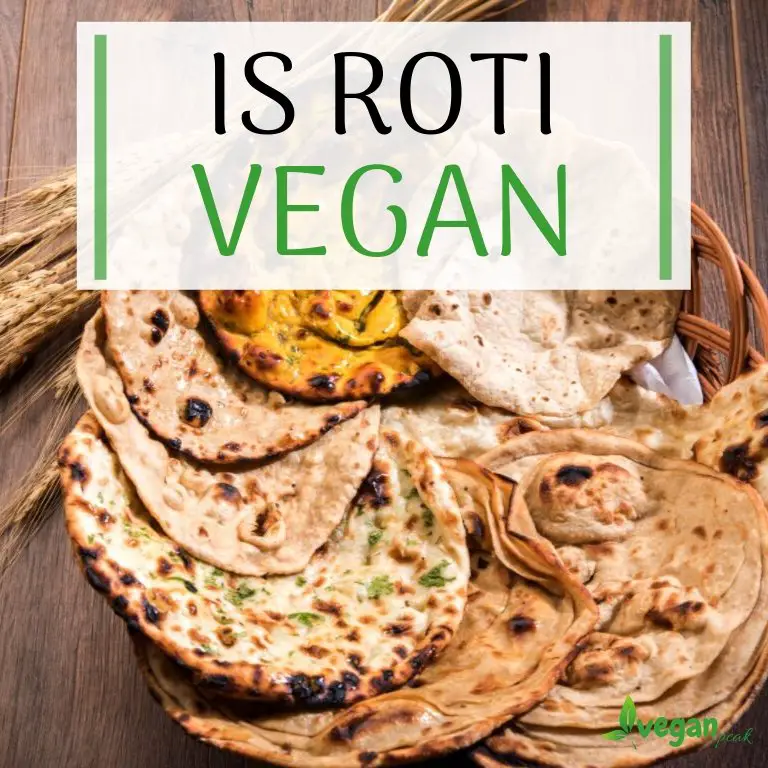This Indian flatbread is becoming more popular worldwide, but is roti vegan? You might know this flatbread by the name of Chapati.
Roti is traditionally vegan because it’s free of animal products. The traditional ingredients are all plant-based, but store or restaurant-bought may not be. Some store-bought can have either animal ingredients or trace amounts.
Some use animal products to add flavor, while others simply have trace amounts. This happens when roti is produced in the same facilities as other eggs or dairy containing products.
While restaurants may use pans or griddles that are also used for cooking non-vegan foods. May not sound that serious, but it can leave behind trace amounts, which makes your roti non-vegan.
So be aware of this. Read along to some examples of what ingredients, as well as, labels you need to avoid.
What Is Roti
Roti is a simple traditional flatbread with origins from India. It’s merely stoneground flour which is mixed with water and usually cooked in a Tawa. More commonly known as a round griddle.
This Indian flatbread has a few variations and can be used in multiple ways. These are the regular roti enjoyed around the world.
- Sada Roti
- Paratha Roti
- Puri
- Dhalpuri
- Wrap Roti
- Aloopuri
It’s all variations of roti, but they have significant differences. While the regular is merely flatbread, the variety of Dhalpuri is stuffed with different vegetables. So there is a big difference, and this article will discuss the regular roti.
Ingredients In Roti
To first identify whether or not roti is vegan, we need a look at the ingredients. Luckily for vegans, the elements of roti are actually quite simple. That’s always preferred in a vegan diet as complicated ingredients increase the risk of hidden animal products.
So here are the traditional ingredients of roti.
- Wheat Flour
- Salt
- Water
- Vegetable Oil
All of these ingredients are without any animals. So the traditional kind can be eaten by vegans. Although, not all roti you encounter is vegan.
Is Roti Typically Vegan

Vegans cannot have any animal products, so this includes meat and other foods such as eggs or dairy. So is roti vegan?
The traditional ingredients in roti are entirely vegan. Although roti is definitely not always vegan as prepackaged or restaurant bought often have eggs or dairy. There are multiple reasons why this might be.
Some brands add eggs or dairy to their roti to add taste or texture. It’s entirely possible to both make and buy vegan prepackaged roti. -And it should not be too difficult to find a vegan version.
You simply need to avoid any ingredients that indicate animals are present. Here’s a shortlist of possible ingredients you need to avoid.
Possible Non-vegan Ingredients In Roti
- Eggs
- Dairy
- Natural Flavor
- Animal Enzymes
They are the most likely ingredients you will encounter. Although this is only for plain roti flatbread as flavored ones can have much more. By that, I mean roti with beef or any other meat condiments.
Can Be Cross-Contaminated
The second and much more tricky way your roti can be non-vegan is with cross-contamination. It’s quite easy to identify whether or not a store-bought roti has trace amounts of animal products.
So how do you determine if a specific roti has trace amounts? Look below the ingredients list for any labels that look like this.
MANUFACTURED IN THE SAME FACILITIES AS EGGS OR DAIRY CONTAINING PRODUCTS
The wording does vary, but that’s one label you need to avoid. It’s even more tricky when it comes to the actual restaurant bought roti.
The restaurant bought kind may be cooked alongside animal products. On the same griddle, for example. That’s not at all uncommon, and there’s only one way to make sure, ask.
Ask your waiter whether or not your roti can have trace amounts. For example, whether or not it’s cooked on the same griddle or pan.
Also Check Out: Are Bagels Vegan?
Make Your Own Vegan Roti
Buying vegan roti comes with a lot of reservations. You always need to make sure it’s without animals. It may not sound that difficult, but as disused, it’s not always that easy. So sometimes it’s just easier to make it yourself.
All you need to make it yourself is a roti griddle and the ingredients as listed above. -And if you want to make it even better use this fresh whole wheat specifically made for roti.
Although you do need a special griddle to make it. It’s not enough to use a regular pan. Take a look at this Concave Griddle For Roti, it’s both cheap and of high quality.
What you need now is a simple step-by-step recipe. Have a look at this vegan recipe if you want to make it yourself. I once made it myself, and it’s an incredibly delicious flatbread bread. A real Indian classic.
Is Chapati Also Vegan
Chapati and roti are actually quite similar. The main difference being preparation, as it’s cooked a little different. A finished chapati is much more thin and papery than roti, but the ingredients are almost identical.
Chapati merely uses different kinds of flours, but the ingredients in both are entirely vegan. So vegans can safely make their own vegan Chapati. Although you still need caution when purchasing.
That’s because it can be either contaminated with trace amounts of animal products. Or even have eggs or dairy ingredients to add taste or texture. So be aware that while most Chapati is vegan, not all are.
Conclusion
Roti is traditionally vegan, but it’s not always a given. Many store-bought brands add animal products for various reasons. This can either be to add flavor or texture. Nevertheless, it’s not vegan if that’s the case. The same is true for restaurant roti, but it’s not the exact same reason.
Restaurants may cook their roti in the same griddle that’s used for meat or other animal products. So you need to ask your waiter whether or not that’s the case. That’ll ensure that you don’t accidentally eat any animal products, even though it’s just trace amounts.

Hey, I’m Gus! I have been vegan for quite some years now, and have collected a lot of knowledge about the subject in this time. My goal with this blog is to spread the vegan message and make it easy to know exactly what’s vegan and what’s not.
